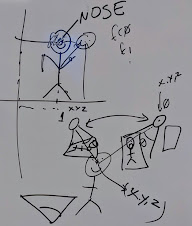(Wang et al., 2014)
Contents
Paper Link:
(Wang et al., 2014)#
In text citation
Citation (APA Format)#
Wang, Z., Ko, J. H., Challis, J. H., & Newell, K. M. (2014). The Degrees of Freedom Problem in Human Standing Posture: Collective and Component Dynamics. PLoS ONE, 9(1), e85414. https://doi.org/10.1371/journal.pone.0085414
Citation Nature Format:#
Wang, Z., Ko, J. H., Challis, J. H. & Newell, K. M. The degrees of freedom problem in human standing posture: collective and component dynamics. PLoS One 9, e85414 (2014).
Brief Summary#
What did they do (what activities)?
Ten volunteers stood in 3 postural tasks with 6 passive markers attached to their left side. A 3-D motion analysis system captured the kinematic information of the passive markers. A force platform was also used and its data was synchronized with the motion analysis system, as the participants went through the different postural tasks.
What did they measure (what data)?
The researchers measured the center of mass and center of pressure. They found the coordination and control of the degrees of freedom in human upright standing.
What did they find (what results)?
most angualr motion in hip joint over all three stances
Active control over multiple joints
What does it mean (what new knowledge)?]
They suggest that the COP-COM dynamic constrains certain postural tasks relating muscular articular synergies of several DFs (degrees of freedom) of the body that satisfies tasks. Motions of joints (i.e. ankle, knee, neck, hip, etc.) provide a supporting rold to the preservation of maintaining the COM within the base of support.
Method figure#
Doesn’t have one
Main Results figure#
Find one that summarizes the findings of paper

